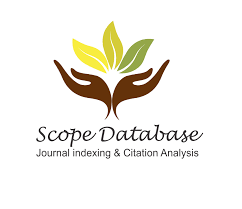Details
Ethnobotanical Study of Ritual Plants in Telangana Festivals
Dr T Annie Sheron
Dept. of Botany, Govt. Degree College for Women Begumpet Hyderabad
Dr K Usha Rani
Dept. of Botany, Govt. Degree College for Women Begumpet Hyderabad
Download PDF http://doi.org/10.37648/ijrst.v15i01.006
http://doi.org/10.37648/ijrst.v15i01.006
Abstract
Ritual plants are integral to the cultural and spiritual traditions of Telangana, India, where festivals blend traditional knowledge, seasonal rhythms, and sacred beliefs. This ethnobotanical study documents ritual flora used in major festivals—Bathukamma, Bonalu, Sammakka‐Saralamma Jatara, Nagula Chavithi, Sankranti, and Vinayaka Chavithi—highlighting their cultural roles and conservation needs. Fieldwork conducted from October 2023 to March 2025 across eight districts involved 146 informants, festival observations, and market surveys. A total of 83 species belonging to 76 genera and 36 families were recorded. Herbs dominated (46.99%), followed by trees (25.30%), shrubs (16.87%), and climbers (10.84%). The most represented families were Fabaceae (12.05%), Lamiaceae (8.43%), Asteraceae (7.23%), and Solanaceae (7.23%). Key culturally important species included Curcuma longa (UV: 0.87, CI: 0.76), Ocimum sanctum (UV: 0.81, CI: 0.72), Cassia fistula (UV: 0.66, CI: 0.64), Azadirachta indica (UV: 0.61, CI: 0.60), and Phyllanthus emblica (UV: 0.55, CI: 0.53). Conservation assessment based on the 2024 IUCN Red List revealed 8 species threatened by overharvesting, habitat loss, and market pressures. The study underscores women’s role in safeguarding ritual plant knowledge and advocates community-led conservation, educational integration, and alignment with UNESCO, CBD and SDG goals (11&15) to protect biodiversity and biocultural heritage.
Keywords: Ethnobotany; Ritual plants; Telangana festivals; Biocultural diversity; Use Value (UV); Cultural Importance Index (CI); Conservation
References
- Gadgil, M., & Berkes, F. (1991). Traditional resource management systems. Resource Management and Optimization, 8, 127–141.
- IUCN. (2024). The IUCN Red List of Threatened Species (Version 2024-1). https://www.iucnredlist.org
- Jain, S. K. (1991). Dictionary of Indian folk medicine and ethnobotany. Deep Publications.
- Kala, C. P. (2005). Ethnomedicinal botany of the Apatani in the Eastern Himalayan region of India. Journal of Ethnobiology and Ethnomedicine, 1(1), 11. https://doi.org/10.1186/1746-4269-1-11
- Kavitha, P., & Reddy, S. M. (2018). Traditional plant knowledge in Medak district of Telangana: A case study. Plant Archives, 18(1), 472–477.
- Kumar, S., & Reddy, T. (2019). Plants used in Vinayaka Chavithi in Warangal district – An ethnobotanical perspective. Indian Journal of Traditional Knowledge, 18(3), 545–550.
- Ministry of Environment, Forests and Climate Change (MoEFCC). (2014). India’s Fifth National Report to the Convention on Biological Diversity.
- Pushpangadan, P., & Kumar, B. (2005). Traditional knowledge and benefit sharing. Journal of Ethnopharmacology, 100(1–2), 5–14. https://doi.org/10.1016/j.jep.2005.05.028
- Rao, V. P., & Henry, A. N. (1996). Ethnobotany of Eastern Ghats in Andhra Pradesh, India. Botanical Survey of India.
- Ravikumar, K., & Ved, D. K. (2000). 100 red listed medicinal plants of conservation concern in Southern India. FRLHT.
- Ravi, M., & Reddy, C. (2021). Ethnobotanical study of medicinal plants in Khammam region of Telangana. International Journal of Herbal Medicine, 9(5), 01–07.
- Reddy, K. N., Reddy, C. S., & Murthy, E. N. (2017). Ethnobotanical studies of Eastern Ghats in Andhra Pradesh and Telangana, India. Journal of Medicinal Plants Studies, 5(2), 23–33.
- Schippmann, U., Leaman, D. J., & Cunningham, A. B. (2002). Impact of cultivation and gathering of medicinal plants on biodiversity: Global trends and issues. FAO.
- Singh, A. G., & Kumar, A. (2014). A review on ethnobotany, phytochemistry, and pharmacology of Aegle marmelos. Journal of Pharmacognosy and Phytochemistry, 3(2), 1–10.
- Singh, N. P., et al. (2016). Flora of Telangana State (Vol. I & II). Botanical Survey of India.
- Singh, R. K., & Singh, A. (2019). Role of women in ethnobotanical conservation. International Journal of Current Microbiology and Applied Sciences, 8(2), 1156–1164.
- Sinha, R. K. (1995). Ethnobotany: The renaissance of traditional herbal medicine. INA Shree Publishers.
- Sreedevi, P. (2020). Ethnobotanical documentation of Bathukamma floral diversity in Telangana. International Journal of Botany Studies, 5(4), 15–20.
- Srivastava, J., Lambert, J., & Vietmeyer, N. (1996). Medicinal plants: An expanding role in development (World Bank Technical Paper No. 320)
- Tuxill, J., & Nabhan, G. P. (2001). People, plants, and protected areas: A guide to in situ management. Earthscan Publications.
- UNESCO. (2003). Convention for the safeguarding of the intangible cultural heritage.
- Ved, D. K., & Goraya, G. S. (2008). Demand and supply of medicinal plants in India. NMPB & FRLHT.
- Venkateshwarlu, N., & Suneetha, G. (2017). Sacred groves and ritual plant conservation in Telangana. Indian Forester, 143(6), 591–598.
- World Health Organization (WHO). (2013). WHO traditional medicine strategy: 2014–2023.











